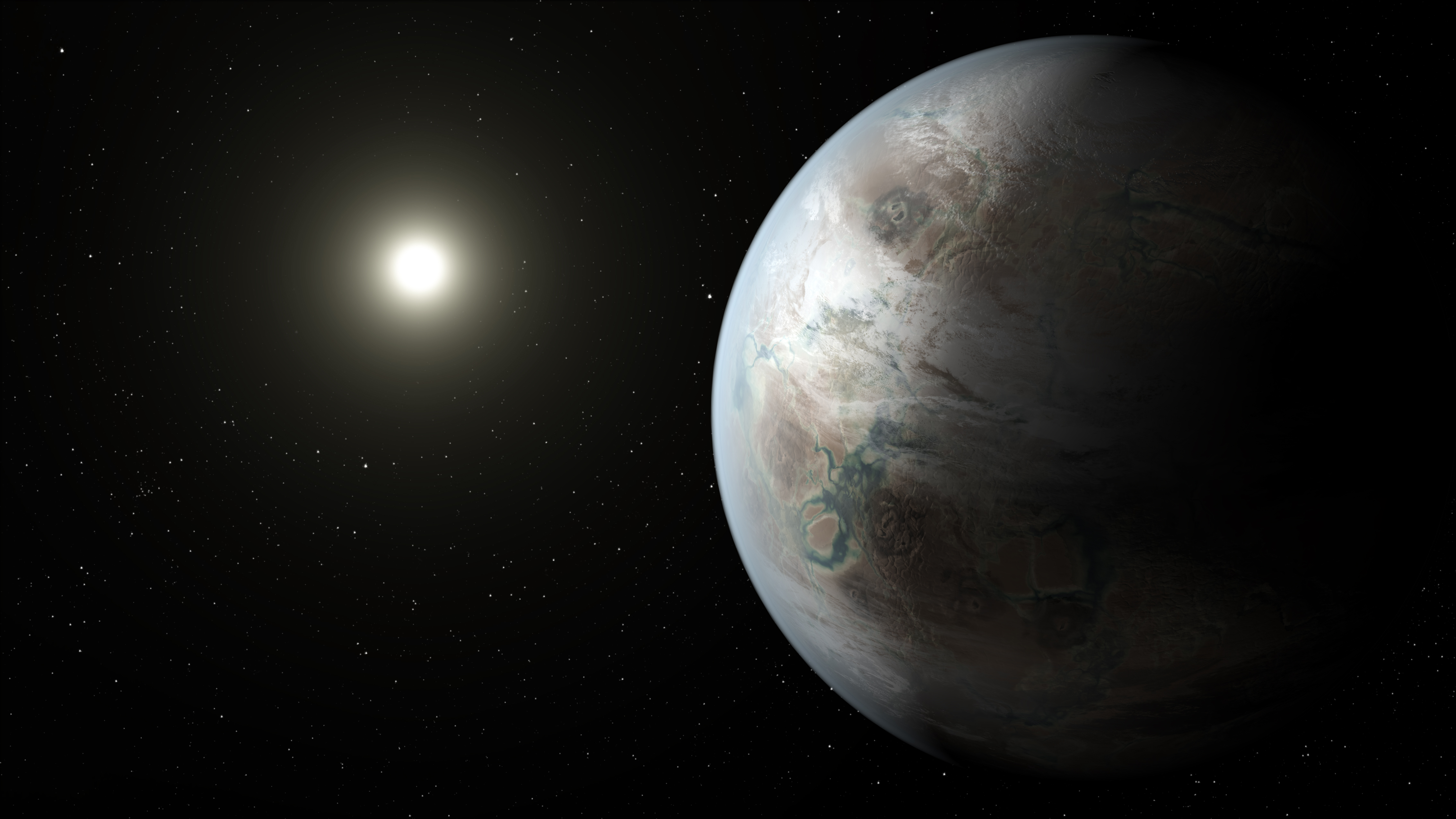
An artist’s concept depicts one possible appearance of Kepler-452b, the first near-Earth-size world to be found in the habitable zone of star that is similar to our sun. (NASA/JPL-Caltech/T. Pyle)
NASA says it has marked another milestone in the journey to find another Earth after its Kepler mission confirmed the first “near-Earth-size planet” in the “habitable zone” around a sun-like star.
Kepler-452b is the smallest planet to date found in the habitable zone (the area around a star where liquid water could pool on the surface of an orbiting planet) of a G2-type star, which is like our sun.
“On the 20th anniversary year of the discovery that proved other suns host planets, the Kepler exoplanet explorer has discovered a planet and star which most closely resemble the Earth and our Sun,” John Grunsfeld, associate administrator of NASA’s Science Mission Directorate at the agency’s headquarters in Washington said in a press release. “This exciting result brings us one step closer to finding an Earth 2.0.”
Here’s what you need to know:
1. The New Planet Is 60 Percent Larger in Diameter Than Earth
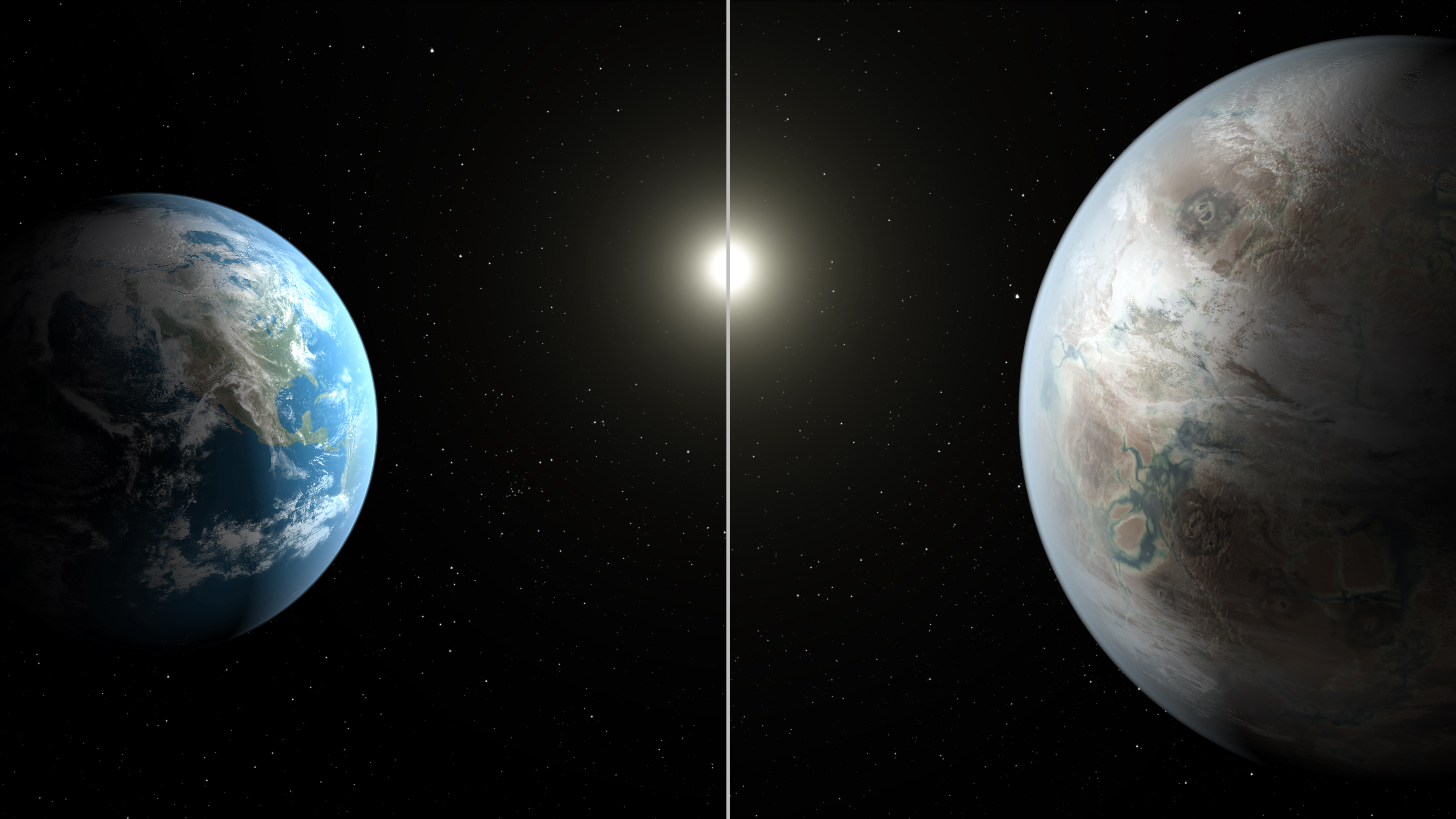
This artist’s concept compares Earth to the new planet, called Kepler-452b, which is about 60 percent larger in diameter. (NASA/JPL-Caltech/T. Pyle)
According to NASA, Kepler-452b is 60 percent larger in diameter than Earth. It is considered a “super-Earth-size-planet.”
NASA says, “while its mass and composition are not yet determined, previous research suggests that planets the size of Kepler-452b have a good chance of being rocky.”
2. Its Orbit Is Only 5 Percent Longer Than Earth’s, Despite Its Size

An artist’s impression of the surface of Kepler 452b. (SETI Institute/Danielle Futselaar)
Although Kepler-452b is larger than Earth, its 385-day orbit is only 5 percent longer than Earth’s trip around the sun.
“The planet is 5 percent farther from its parent star Kepler-452 than Earth is from the Sun. Kepler-452 is 6 billion years old, 1.5 billion years older than our sun, has the same temperature, and is 20 percent brighter and has a diameter 10 percent larger,” NASA says.
“Kepler 452b takes us one step closer to understanding how many habitable planets are out there,” Joseph Twicken, of the SETI Institute and the lead scientific programmer for the Kepler mission, said in a press release. “Continued investigation of the other candidates in this catalog and one final run of the Kepler science pipeline will help us find the smallest and coolest planets. Doing so will allow us to better gauge the prevalence of habitable worlds.”
3. Scientists Say It’s Like an ‘Older Cousin’ to Earth
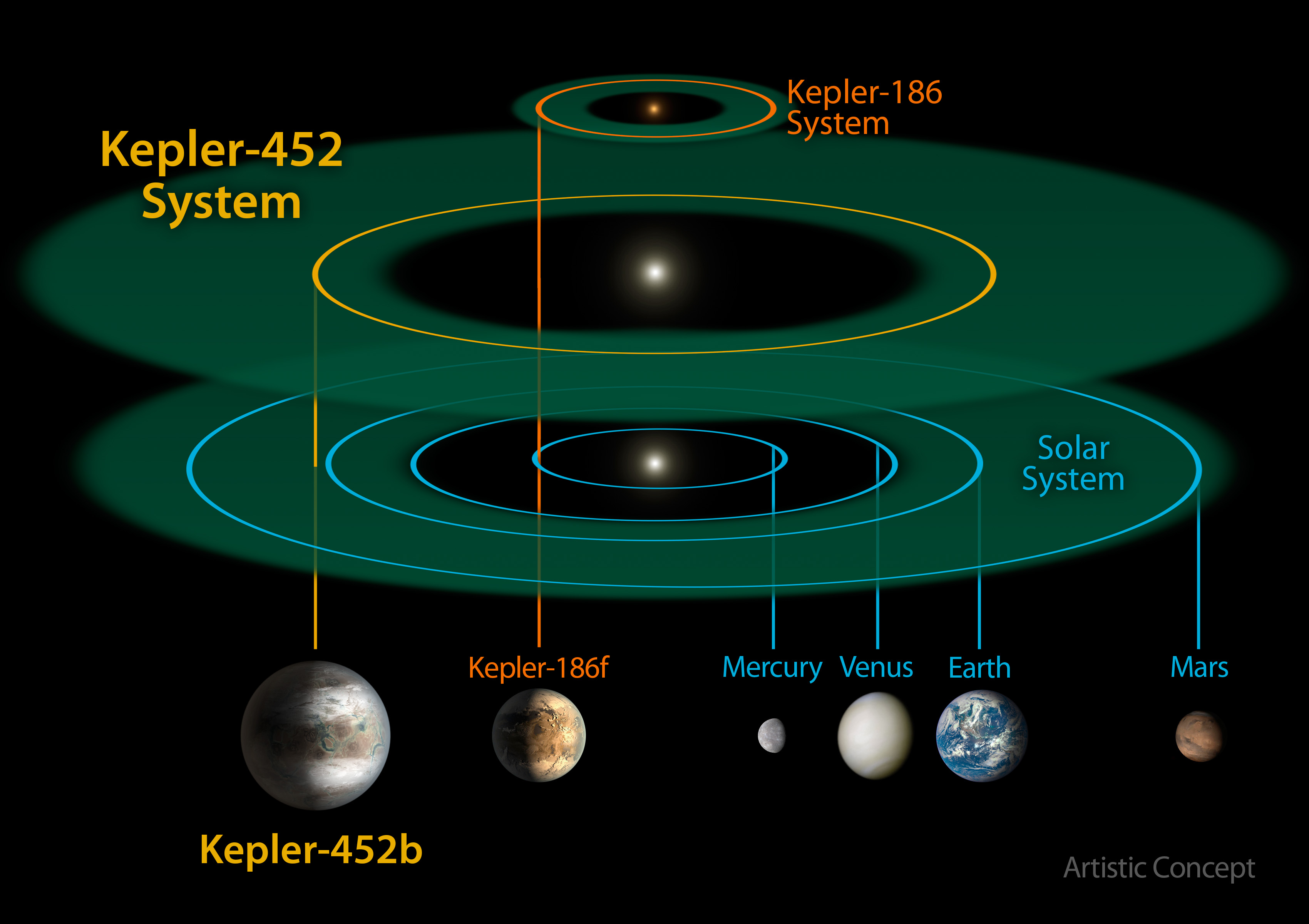
This size and scale of the Kepler-452 system compared alongside the Kepler-186 system and the solar system. Kepler-186 is a miniature solar system that would fit entirely inside the orbit of Mercury. (NASA/JPL-CalTech/R. Hurt)
“We can think of Kepler-452b as an “older, bigger cousin to Earth, providing an opportunity to understand and reflect upon Earth’s evolving environment,” said Jon Jenkins, Kepler data analysis lead at NASA’s Ames Research Center in California, who led the team that found the planet. “It’s awe-inspiring to consider that this planet has spent 6 billion years in the habitable zone of its star; longer than Earth. That’s substantial opportunity for life to arise, should all the necessary ingredients and conditions for life exist on this planet.”
The team conducted ground-based observations at the McDonald Observatory in Texas, the Fred Lawrence Whipple Observatory in Arizona and the W.M. Keck Observatory in Hawaii to better determine the size and brightness of Kepler’s host star, and to “better pin down the size of the planet and its orbit.”
4. The Planet Is 1,400 Light-Years Away
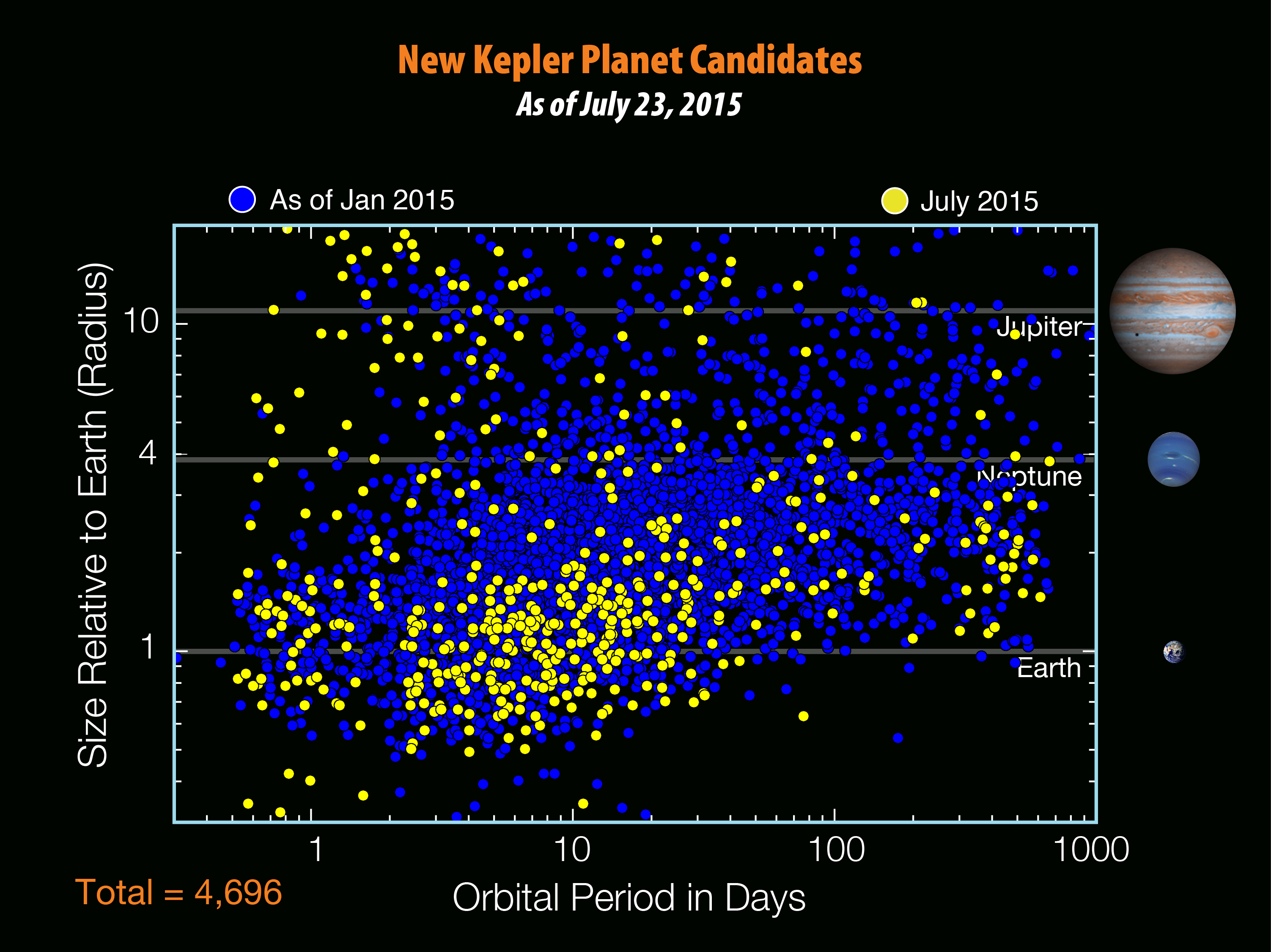
There are 4,696 planet candidates now known with the release of the seventh Kepler planet candidate catalog – an increase of 521 since the release of the previous catalog in January 2015. (NASA/W. Stenzel)
NASA says Kepler-452 and the system it’s in is located 1,400 light-years away in the constellation Cygnus.
The Kepler team has now found 521 more exoplanets (planets that orbit a star other than our Sun), through its analysis of observations from May 2009 to May 2013. There are now 4,696 planet candidates found by the Kepler telescope. Of those, 12 have diameters between one to two times that of Earth and orbit in their star’s habitable zone. Nine are orbiting suns similar to ours in size and temperature.
“We’ve been able to fully automate our process of identifying planet candidates, which means we can finally assess every transit signal in the entire Kepler dataset quickly and uniformly,” Jeff Coughlin, Kepler scientist at the SETI Institute in Mountain View, California, who led the analysis of a new candidate catalog, said in a statement. “This gives astronomers a statistically sound population of planet candidates to accurately determine the number of small, possibly rocky planets like Earth in our Milky Way galaxy.”
5. Kepler Was Launched in 2009 to Find Earth-Like Planets Around Other Suns
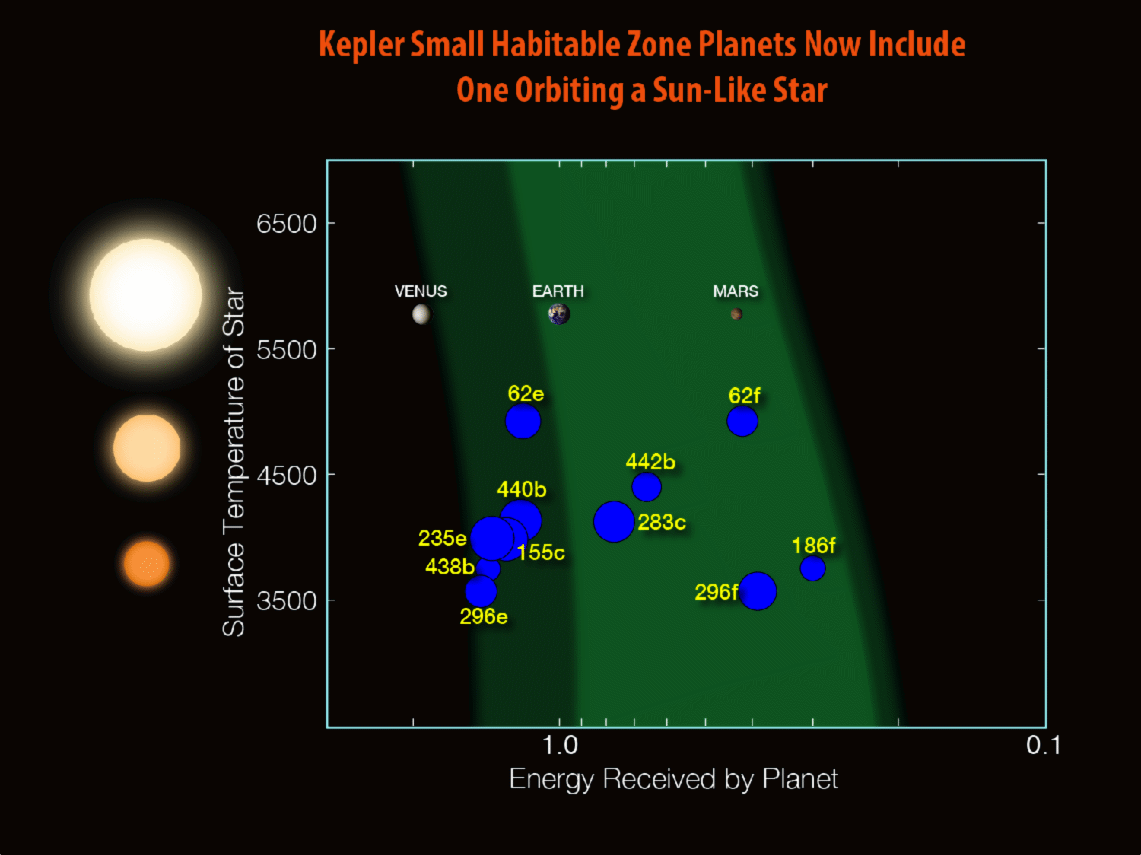
Since Kepler launched in 2009, twelve planets less than twice the size of Earth have been discovered in the habitable zones of their stars. (NASA/N. Batalha and W. Stenzel)
The Kepler telescope was launched on March 6, 2009, from Cape Canaveral in Florida, with a mission to find other Earth-like planets orbiting other suns.
According to NASA’s press release from the launch:
The Kepler spacecraft will watch a patch of space for indications of Earth-sized planets orbiting stars similar to the sun. The area that Kepler will watch contains about 150,000 stars like the sun. Using special detectors similar to those used in digital cameras, Kepler will look for a slight dimming in the stars as planets pass between the stars and Kepler. The observatory’s place in space will allow it to watch the same stars constantly throughout its mission, something observatories such as NASA’s Hubble Space Telescope and ground-based telescopes cannot do.